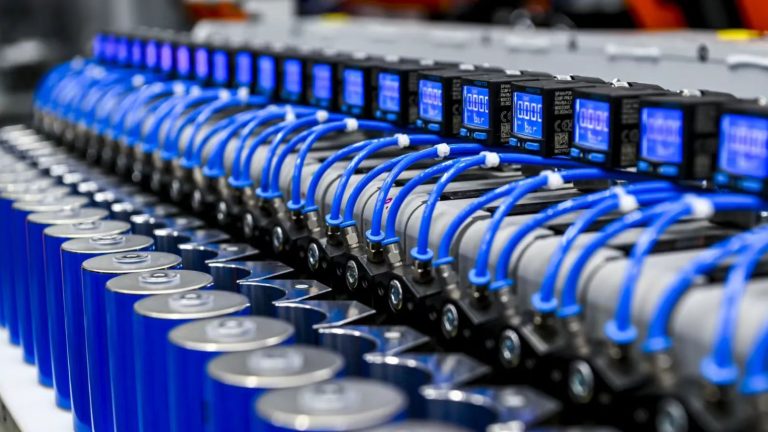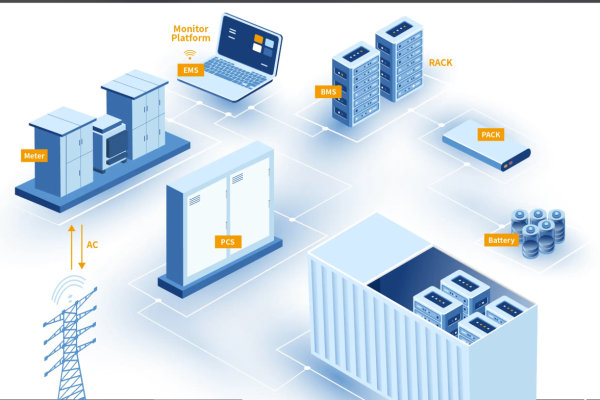Why Battery Safety Isn’t Just About Chemistry — and What Buyers Should Know
Introduction: Safety Starts Inside the Battery
When residential customers buy a lithium battery for backup or solar storage, they often focus on:
- Capacity (kWh)
- Price per unit
- Cycle life
- Chemistry (e.g., LFP vs. NMC)
But arguably the most critical factor for safety — and often the least understood — is the Battery Management System, or BMS.
A good BMS protects your battery. A poor BMS can destroy it — or worse, create a fire risk.
In this article, we explain the real role of the BMS, what to ask when sourcing batteries, and how it affects your installation’s long-term safety and reliability.
1. What Is a BMS?
The Battery Management System (BMS) is the electronic “brain” of a lithium battery pack. It monitors and controls:
- Voltage of each cell or cell group
- Current (both charge and discharge)
- Temperature of battery modules
- State of Charge (SOC)
- Balancing between cells
- Protection mechanisms (cutoff, alarms)
- Communication with the inverter or EMS
In short, the BMS ensures the battery operates within safe, defined parameters.
2. Core BMS Safety Functions
| Function | Purpose |
|---|---|
| Overcharge protection | Prevents cell damage or thermal runaway |
| Overdischarge protection | Prevents deep discharge and capacity loss |
| Overcurrent protection | Prevents overheating or short-circuit damage |
| Thermal monitoring | Shuts down system if cells get too hot |
| Cell balancing | Prevents weak cells from dragging down performance |
| Emergency cut-off | Acts instantly in abnormal conditions |
Without a properly configured BMS, even the safest LFP chemistry can become unstable.
3. Communication: Smart BMS vs. Dumb BMS
There are two broad types of BMS in residential systems:
✅ Smart BMS (with CAN or RS485)
- Communicates with hybrid inverter
- Provides real-time voltage, current, SOC, and temperature
- Enables precise charge/discharge control
- Often required for warranty protection
❌ Basic BMS (no external comm)
- Operates internally with fixed protection values
- Inverter guesses battery behavior based on voltage
- No feedback loop = risk of overloading or premature shutdown
For grid-tied or hybrid systems, always prefer batteries with open, well-documented BMS protocols.
4. Why BMS Quality Varies Widely
Not all lithium batteries are created equal — even with the same chemistry.
Low-end batteries may:
- Use low-resolution voltage sensors
- Lack temperature sensors on all modules
- Have poor or absent balancing
- Use untested firmware logic
- Ignore peak current limits
This can lead to:
- Cells drifting out of balance
- SOC reporting that is wildly inaccurate
- Heat buildup during high load
- Random shutdowns or permanent damage
A good BMS adds longevity, performance, and safety. A cheap one saves cost — until it fails.
5. Real-World BMS Safety Examples
Here are a few scenarios that highlight how crucial the BMS is in real installations:
🏡 Scenario 1: Overcharge During PV Peak
- Without BMS comms, inverter doesn’t see real SOC
- Keeps pushing charge current even when battery is full
- Cells overcharge, get hot → long-term degradation or fire risk
🏡 Scenario 2: Cold Weather Discharge
- In cold climates, lithium cells should not be charged below 0°C
- A good BMS blocks charging and issues alarm
- A bad BMS allows it — leading to plating, internal damage, and shortened life
🏡 Scenario 3: One Cell Drifts
- One cell in a 16-cell pack drops voltage
- Without balancing, pack continues operating at unsafe imbalance
- BMS should isolate battery and flag alarm before damage occurs
6. What Installers Should Look For
When evaluating a battery’s BMS, ask the following:
✅ Does it support CAN/RS485 communication?
✅ Is the protocol open or encrypted?
✅ Are there temperature sensors on all modules?
✅ What is the balancing current (active/passive)?
✅ Does it support remote monitoring or diagnostics?
✅ Can it log historical fault data?
For higher-end residential projects, also consider:
- Firmware update capability
- Pre-configured integration with target inverters
- Overvoltage soft shutdowns vs. hard cutoffs
7. Explaining to Customers: Safety in Plain Language
When talking to residential clients who don’t understand BMS details, try these analogies:
- “The BMS is like the battery’s immune system — always scanning for problems and acting instantly.”
- “It’s what makes a smart battery smart — it can talk to the inverter, balance cells, and shut itself off before danger.”
- “A battery without a good BMS is like a car without brakes or dashboard indicators.”
This helps position your offering as professionally designed, not just a box with cells.
8. When the BMS Isn’t Enough
Even with a good BMS, residential battery safety also depends on:
- Proper circuit protection (fuses, breakers)
- Quality cables and terminals
- Well-configured inverter charge profiles
- Ventilation and spacing around battery
- Installer awareness of system limits
A BMS is critical — but it’s one part of a safe energy system, not a total safety net.
Conclusion: BMS Is the Hidden Hero of Lithium Storage
For residential storage projects, buyers and installers should treat the BMS not as an afterthought, but as a core buying criterion. It directly affects:
- System safety
- Inverter compatibility
- Cycle life and performance
- Warranty support
- User confidence
When you recommend or procure lithium batteries, make sure the BMS is documented, tested, and appropriately integrated. It’s the most important feature your clients will never see — but will always depend on.









